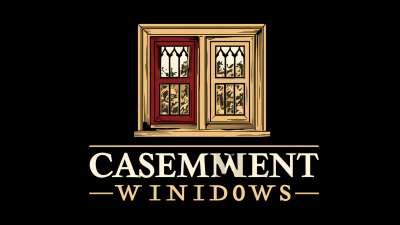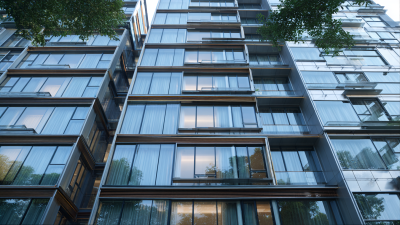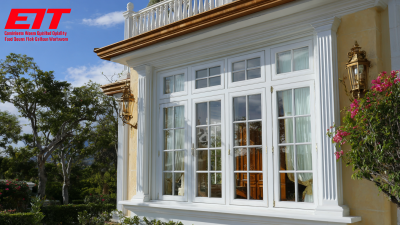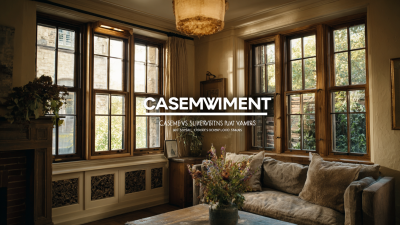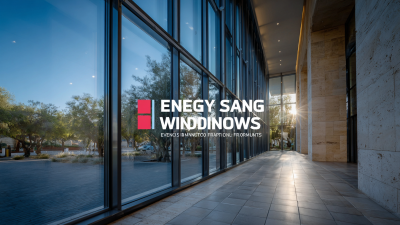The installation of Casement Windows is increasingly recognized as a pivotal enhancement for residential energy efficiency and the maximization of natural light. According to the American Institute of Architects, well-designed windows can reduce energy expenses by as much as 25% if properly installed and maintained.
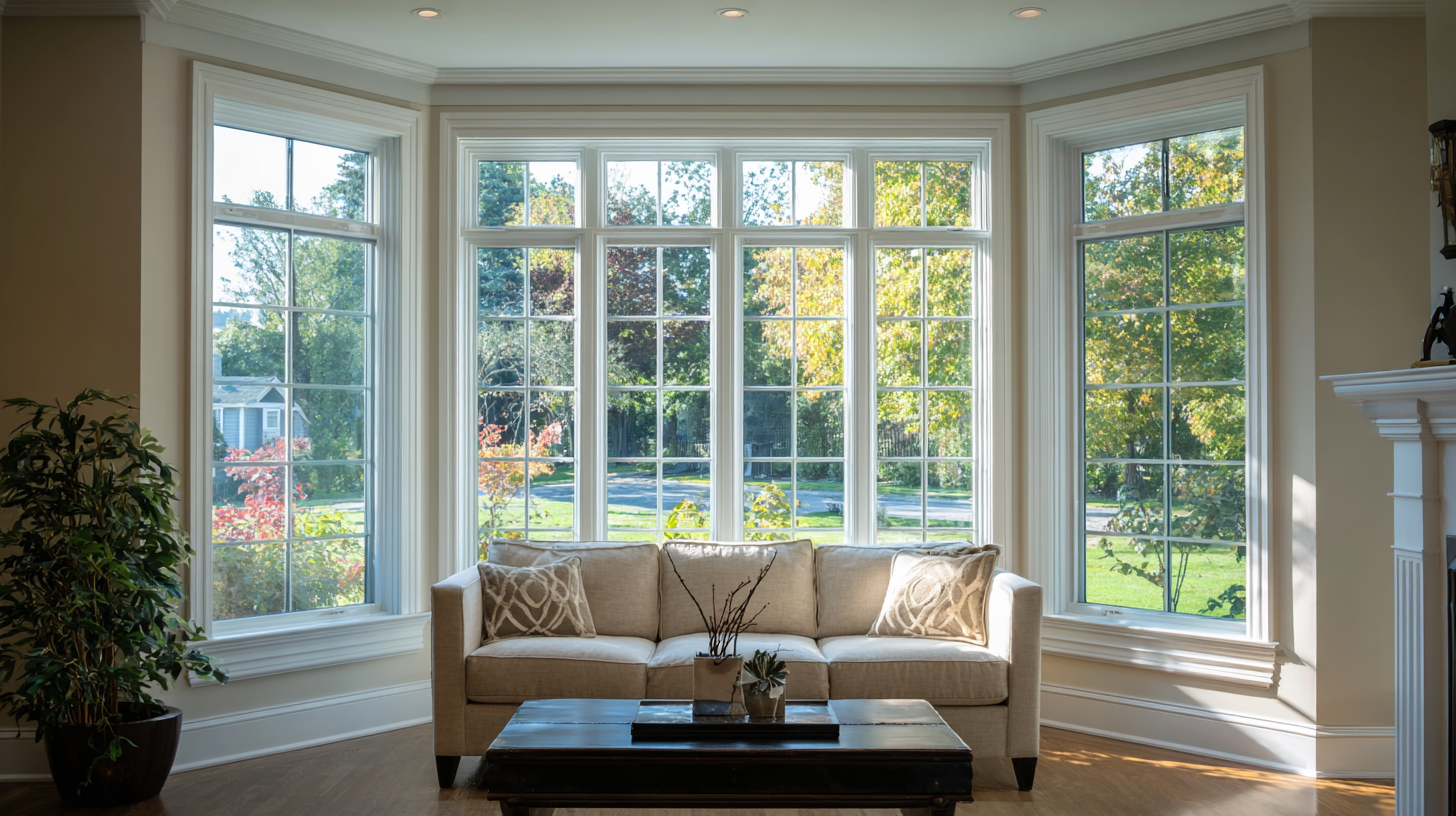 Casement Windows, characterized by their unique side-hinged operation, not only offer superior ventilation but also create a seamless connection between indoor and outdoor environments, allowing for an abundance of natural light to flood living spaces. A study conducted by the National Fenestration Rating Council indicates that homes fitted with energy-efficient windows experience notable decreases in heating and cooling costs, contributing to an overall reduction in carbon footprints.
By exploring the multitude of benefits associated with Casement Windows, homeowners can make informed decisions that enhance both comfort and sustainability in their living spaces.
Casement Windows, characterized by their unique side-hinged operation, not only offer superior ventilation but also create a seamless connection between indoor and outdoor environments, allowing for an abundance of natural light to flood living spaces. A study conducted by the National Fenestration Rating Council indicates that homes fitted with energy-efficient windows experience notable decreases in heating and cooling costs, contributing to an overall reduction in carbon footprints.
By exploring the multitude of benefits associated with Casement Windows, homeowners can make informed decisions that enhance both comfort and sustainability in their living spaces.
Casement windows have garnered attention for their impressive energy efficiency ratings compared to traditional styles like double-hung or sliding windows. The primary reason behind this is their unique design, which features a hinged frame that opens outwards. This allows the window to create a tighter seal when closed, minimizing air leakage and drafts. As a result, homeowners can benefit from better insulation, ultimately leading to lower heating and cooling costs throughout the year.
In addition to their improved seal, casement windows often come with advanced glazing options that further enhance their performance. Many models utilize low-emissivity (Low-E) glass, which reflects infrared radiation while allowing natural light to enter. This means that while homeowners enjoy abundant sunlight, they are not sacrificing energy efficiency. When comparing energy efficiency ratings, casement windows typically outperform traditional styles, making them an ideal choice for those looking to enhance their home's sustainability and reduce their energy bills.

When considering home insulation, the U-factor plays a crucial role in determining the energy efficiency of windows. This measurement reflects the heat transfer rate through a window, and a lower U-factor indicates better insulating properties. Casement windows, which are hinged at the side and open outward, often feature superior U-factors compared to other window styles like double-hung or sliding windows. Their design allows for a tighter seal when closed, reducing air leakage and preventing unwanted drafts that can compromise indoor temperature.
Furthermore, the energy efficiency of casement windows extends beyond just the U-factor. Many modern casement windows are constructed with advanced glazing options, such as Low-E coatings and gas fills, that enhance their ability to retain heat during the winter and keep cooling costs down in the summer. This means that not only do they provide ample natural light, contributing to a brighter, more pleasant living space, but they also help maintain a consistent indoor climate, ultimately leading to lower energy bills and a reduced carbon footprint for homeowners.
Casement windows are a remarkable choice for enhancing natural light in any space. Unlike traditional double-hung windows, casement windows are hinged at the side and open outward, allowing for a more unobstructed view and increased light penetration. This design maximizes daylight harvesting by enabling sunlight to flood in from a wider angle, which creates brighter, more inviting interiors. Additionally, the ability to open these windows fully allows for better airflow, making spaces feel more open and connected to the outdoors.
Moreover, casement windows can be strategically placed to optimize the amount of natural light entering a room. When installed in locations that align with the sun’s path throughout the day, they can significantly reduce the need for artificial lighting, leading to energy savings. By blending functionality with aesthetics, casement windows not only elevate the brightness of a room but also contribute to a more sustainable living environment. Their versatility makes them an excellent choice for various architectural designs, ensuring that homes can harness the full spectrum of natural daylight.
Casement windows have gained popularity not only for their aesthetic appeal but also for their significant energy efficiency benefits. According to the U.S. Department of Energy, windows account for approximately 25-30% of residential heating and cooling energy use. Installing casement windows can help mitigate these costs due to their airtight seal when closed, which minimizes drafts and heat loss. The Energy Efficiency Standards set forth by the National Fenestration Rating Council indicate that casement windows often boast energy performance ratings that exceed those of traditional sliding or double-hung windows, leading to potential energy savings of up to 15% on heating and cooling bills.
In a cost-benefit analysis conducted by the Window and Door Manufacturers Association, it was found that homeowners can recover as much as 90% of their investment in energy-efficient windows through energy savings and increased home value. Furthermore, an analysis from the Efficient Windows Collaborative highlights that homeowners typically save an average of $465 annually on energy costs when upgrading to high-efficiency casement windows. These figures underscore the financial incentives for homeowners considering a renovation focused on maximizing energy efficiency while flooding their spaces with natural light.
 Casement windows are increasingly recognized for their role in enhancing
energy efficiency and maximizing
natural light within homes. Real-world case studies illustrate significant reductions
in energy consumption, showcasing how these windows can impact utility bills positively.
Homeowners who have made the switch to casement windows often report lower heating and
cooling costs throughout the year. By utilizing a hinged design that allows for full opening,
these windows create better ventilation, reducing reliance on artificial heating and cooling systems.
Casement windows are increasingly recognized for their role in enhancing
energy efficiency and maximizing
natural light within homes. Real-world case studies illustrate significant reductions
in energy consumption, showcasing how these windows can impact utility bills positively.
Homeowners who have made the switch to casement windows often report lower heating and
cooling costs throughout the year. By utilizing a hinged design that allows for full opening,
these windows create better ventilation, reducing reliance on artificial heating and cooling systems.
Tips for Maximizing Energy Efficiency with Casement Windows:
To fully benefit from casement windows, consider installing double or triple-glazed options;
these provide better insulation compared to single-pane windows. Additionally, ensure
proper sealing during installation to minimize air leaks. Utilizing
low-emissivity (low-E) glass can further enhance energy efficiency
by reflecting infrared light and keeping homes warmer in the winter while remaining cool in the summer.
Furthermore, strategic placement of casement windows can optimize natural light intake. Positioning them on the south or southwest side of the property allows for maximum sunlight exposure, contributing to a brighter interior and decreased reliance on electric lighting during the day. This intelligent design choice not only elevates the space but also aligns with sustainable living practices.
